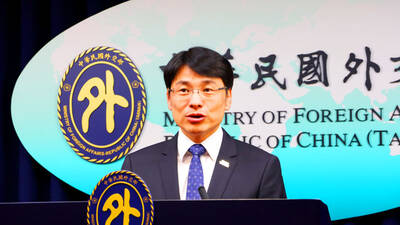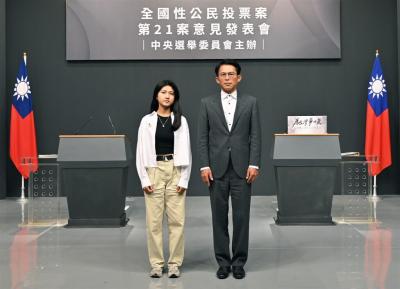Native-language interest groups yesterday urged the Ministry of Education to speed up the creation of a unified phonetic system for the Hoklo language (commonly known as Taiwanese) to preserve Taiwanese culture.
Lee Shang-hsien (
At the moment, Hoklo text books use either Tongyong pinyin, the Hanyu Romanization system, or the Taiwanese Language Phonetic Alphabet (TLPA).
Lee said that the three systems did not reflect regional Hoklo accents, and added that the Hoklo language could not be preserved and passed on to the next generation without a unified phonetic system.
Language teacher Su Huang-hung (
Using the Tongyong pinyin system reduces Hoklo to only five tones, Su said.
In addition, Hoklo pronunciation changes according to syntactic context, she added.
However, Tongyong pinyin marks these cases as variant pronunciations, creating a situation in which many students do not know the original pronunciation of the words they study, Su said.
Hanyu pinyin and the TLPA are almost entirely identical, since the TLPA system was derived from Hanyu pinyin by the Ministry of Education many years ago, said Lu Ching-ching (
Lu said there were similarities among the three systems, and that all three have advantages and disadvantages.
The committee's main problem was to reach a consensus and decide on one system or to incorporate the three systems into one, she said.
Discussions are still taking place at the ministry on unifying the phonetic system, Lu added.
Huang Yu-chi (
Other representatives said that not only students, but also foreigners and foreign spouses need to learn Hoklo and are in need of a unified system.

The Japan-Taiwan Exchange Association has cautioned Japanese travelers to be vigilant against pickpockets at several popular tourist spots in Taiwan, including Taipei’s night markets, the Yongkang Street area, Zhongshan MRT Station, and Jiufen (九份) in New Taipei City. The advisory, titled “Recent Development of Concerns,” was posted on the association’s Web site under its safety and emergency report section. It urges travelers to keep backpacks fully zipped and carried in front, with valuables placed at the bottom of the bag. Visitors are advised to be especially mindful of their belongings when taking photos or speaking on the phone, avoid storing wallets and

ENDORSING TAIWAN: Honduran presidential candidate Nasry Afura said that Honduras was ‘100 times better off’ when it was allied with Taipei The Ministry of Foreign Affairs yesterday said it would explore the possibility of restoring diplomatic relations with Honduras based on the principle of maintaining national interests and dignity. The ministry made the remarks in response to reporters’ questions regarding an article titled: “Will Taiwan Regain a Diplomatic Ally?” published in The Diplomat on Saturday. The article said Honduras’ presidential election in November could offer Taiwan the chance to regain an ally, as multiple candidates have promoted re-establishing diplomatic relations with Taiwan. Honduras severed diplomatic ties with Taiwan in March 2023 in favor of Beijing, but since switching its diplomatic recognition,

Scoot announced yesterday that starting in October, it would increase flights between Taipei and Japan’s Narita airport and Hokkaido, and between Singapore and Taipei. The low-cost airline, a subsidiary of Singapore Airlines, also said it would launch flights to Chiang Rai in Thailand, Okinawa and Tokyo’s Haneda airport between December and March next year. Flights between Singapore and Chiang Rai would begin on Jan. 1, with five flights per week operated by an Embraer E190-E2 aircraft, Scoot said. Flights between Singapore and Okinawa would begin on Dec. 15, with three flights per week operated by Airbus A320 aircraft, the airline said. Services between Singapore

A fourth public debate was held today about restarting the recently decommissioned Ma-anshan Nuclear Power Plant, ahead of a referendum on the controversial issue to be held in less than two weeks. A referendum on Aug. 23 is to ask voters if they agree that “the Ma-anshan Nuclear Power Plant should continue operations upon approval by the competent authority and confirmation that there are no safety concerns.” Anyone over 18 years of age can vote in the referendum. The vote comes just three months after its final reactor shut down, officially making Taiwan nuclear-free. Taiwan People’s Party Chairman Huang Kuo-chang (黃國昌) represented